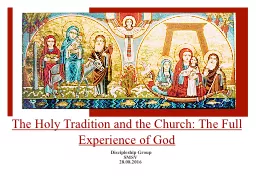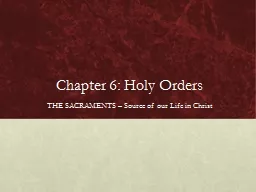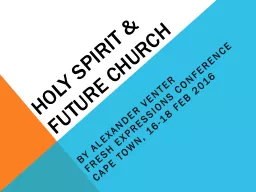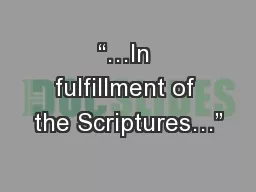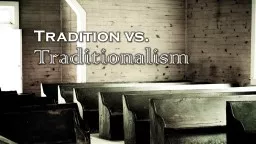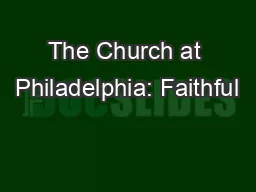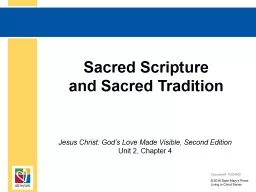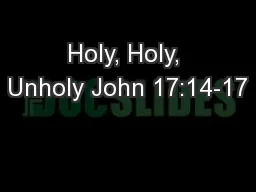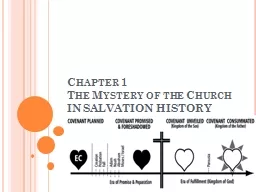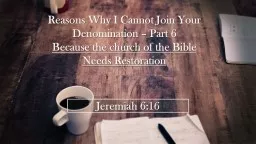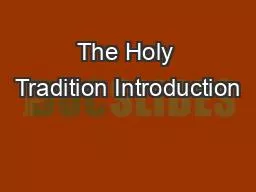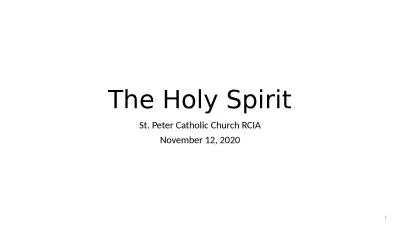PPT-The Holy Tradition and the Church: The Full Experience of God
Author : alexa-scheidler | Published Date : 2018-03-18
Discipleship Group SMSV 28082016 Main Points Introduction Definition Church Fathers on the i mportance of Tradition Church or Scriptures where is the dilemma
Presentation Embed Code
Download Presentation
Download Presentation The PPT/PDF document "The Holy Tradition and the Church: The F..." is the property of its rightful owner. Permission is granted to download and print the materials on this website for personal, non-commercial use only, and to display it on your personal computer provided you do not modify the materials and that you retain all copyright notices contained in the materials. By downloading content from our website, you accept the terms of this agreement.
The Holy Tradition and the Church: The Full Experience of God: Transcript
Download Rules Of Document
"The Holy Tradition and the Church: The Full Experience of God"The content belongs to its owner. You may download and print it for personal use, without modification, and keep all copyright notices. By downloading, you agree to these terms.
Related Documents

